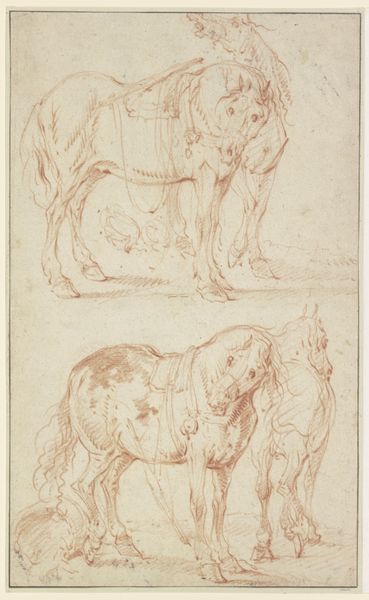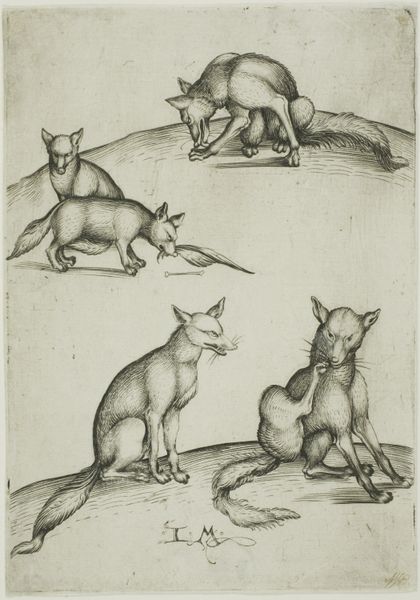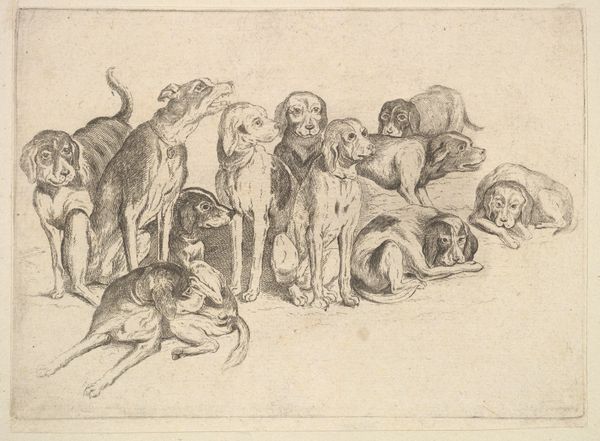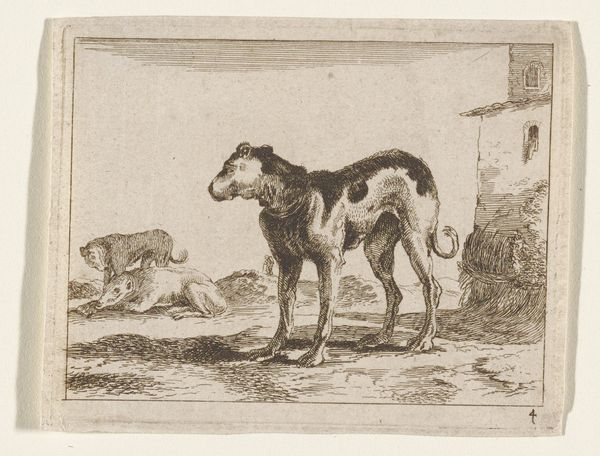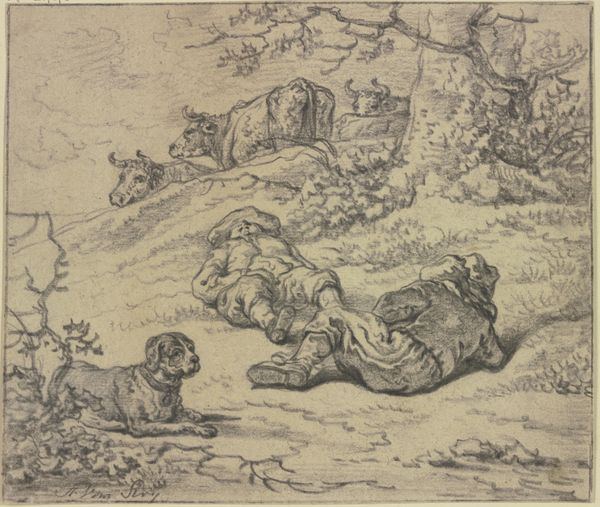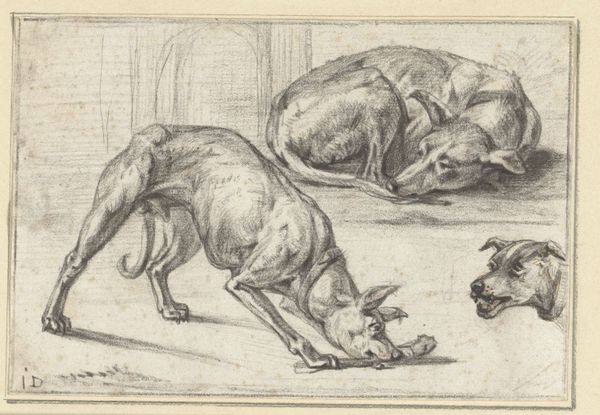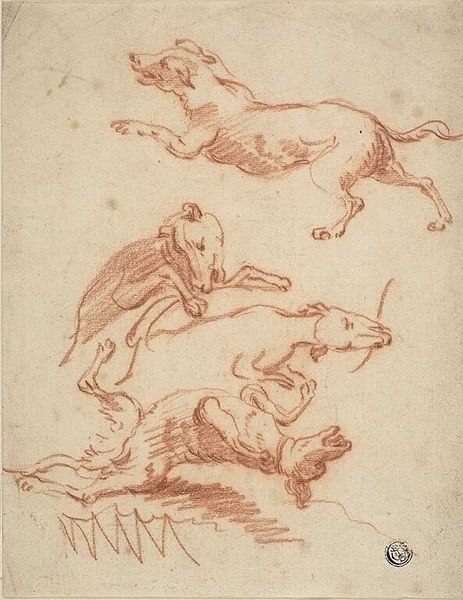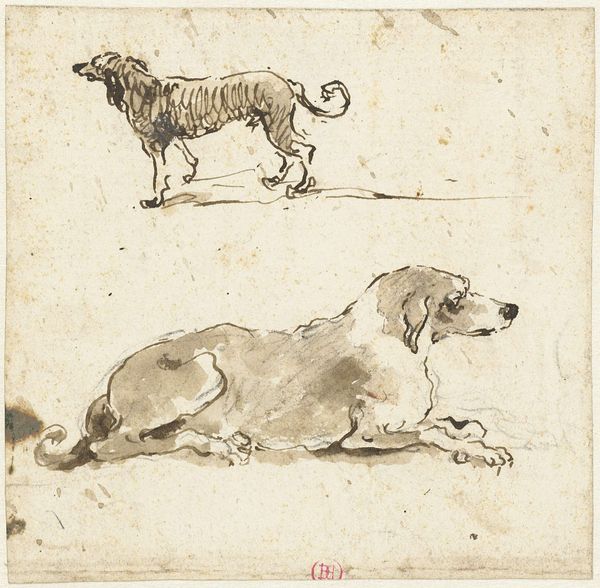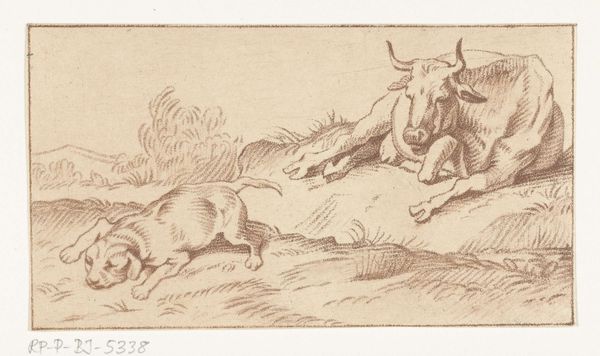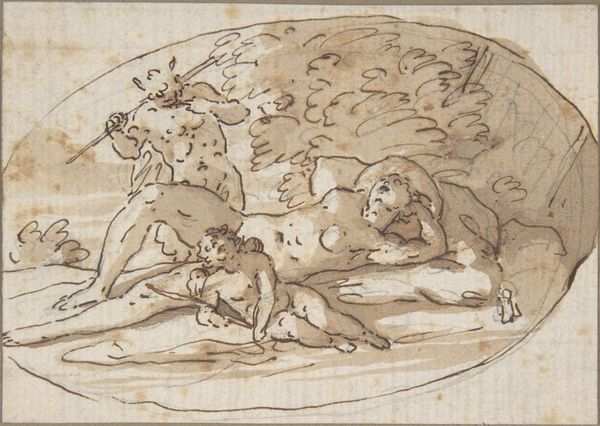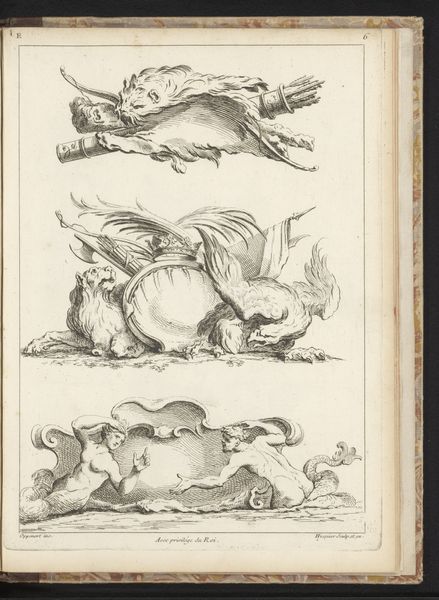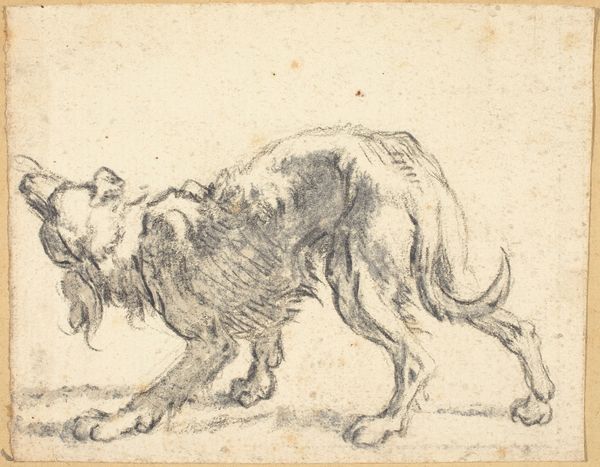
drawing, print, engraving
#
drawing
# print
#
landscape
#
figuration
#
form
#
line
#
northern-renaissance
#
engraving
#
realism
Dimensions: sheet: 10 1/4 x 9 1/8 in. (26 x 23.2 cm)
Copyright: Public Domain
Editor: Here we have Jan Cornelisz Vermeyen's "A Doe and Two Lionesses," made sometime between 1535 and 1545. It’s a print, an engraving, with a strikingly linear style. I’m really struck by how static it feels, despite the presence of these powerful predators. What do you see in this piece, especially considering the time it was made? Curator: It’s fascinating, isn’t it? Beyond the apparent depiction of wildlife, I see a potent visual statement on power dynamics. Consider the historical context: the Northern Renaissance, a time of exploration, colonization, and the assertion of dominance over the natural world. Vermeyen was actually court painter for Charles V and accompanied him to Tunis, so the depiction of African lions could also relate to colonisation, hunting and the capturing of wild animals. Do you think it's possible to view the lionesses as symbols of colonial power, and the doe, vulnerable and exposed, representing the colonized? Editor: That’s a perspective I hadn’t considered! The passivity of the animals does lend itself to that reading. It challenges my initial impression. But how does that intersect with gender and identity, considering the lionesses are female? Curator: Excellent question. Feminist theory allows us to interpret this not simply as a depiction of power, but specifically masculine power exerting control over both the feminine (the lionesses submissive poses) and the vulnerable other (the doe). The Renaissance was hardly a period of equality. Their subdued postures, perhaps, mirror the societal expectations placed upon women during that era – a silencing of their own power under the gaze of a patriarchal society. Editor: That really makes me rethink the image's message! Curator: Indeed! Art is never created in a vacuum, and analyzing its historical and social context can unveil powerful, often uncomfortable, truths about our past – and, by extension, our present. Editor: This has been truly insightful, thank you! I'm going to approach artwork with far more complex intersectional thinking moving forward. Curator: It's a continuing journey of discovery, with each artwork acting as a lens through which we can view our own values and preconceptions, questioning our history to inform our future.
Comments
No comments
Be the first to comment and join the conversation on the ultimate creative platform.
